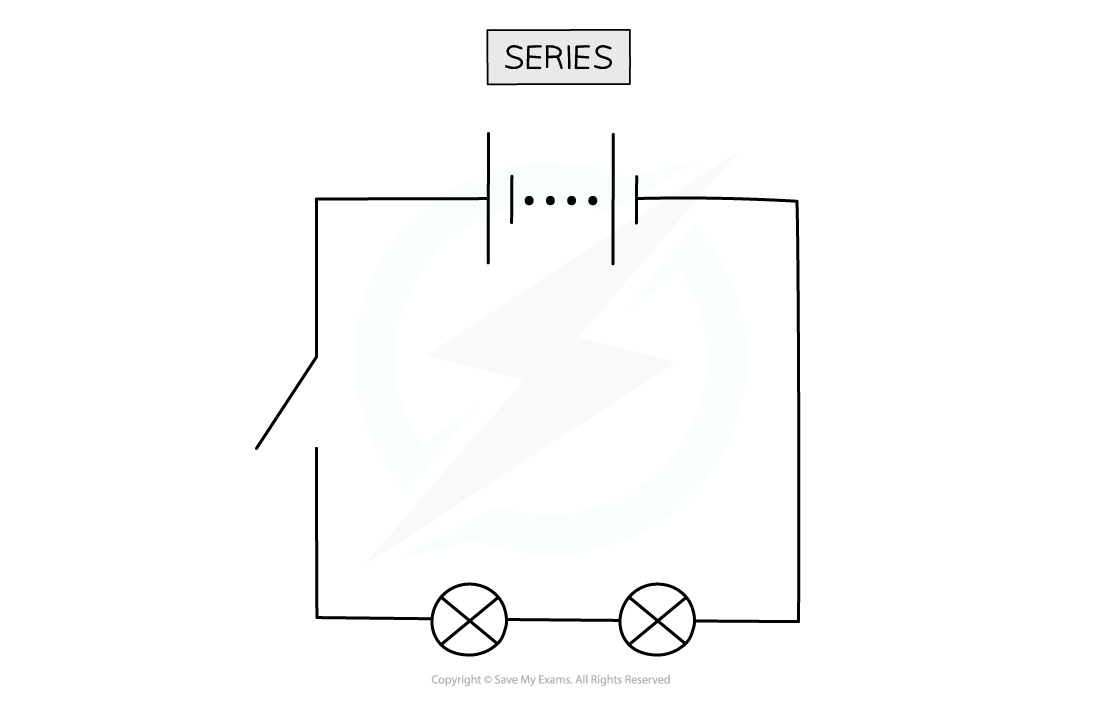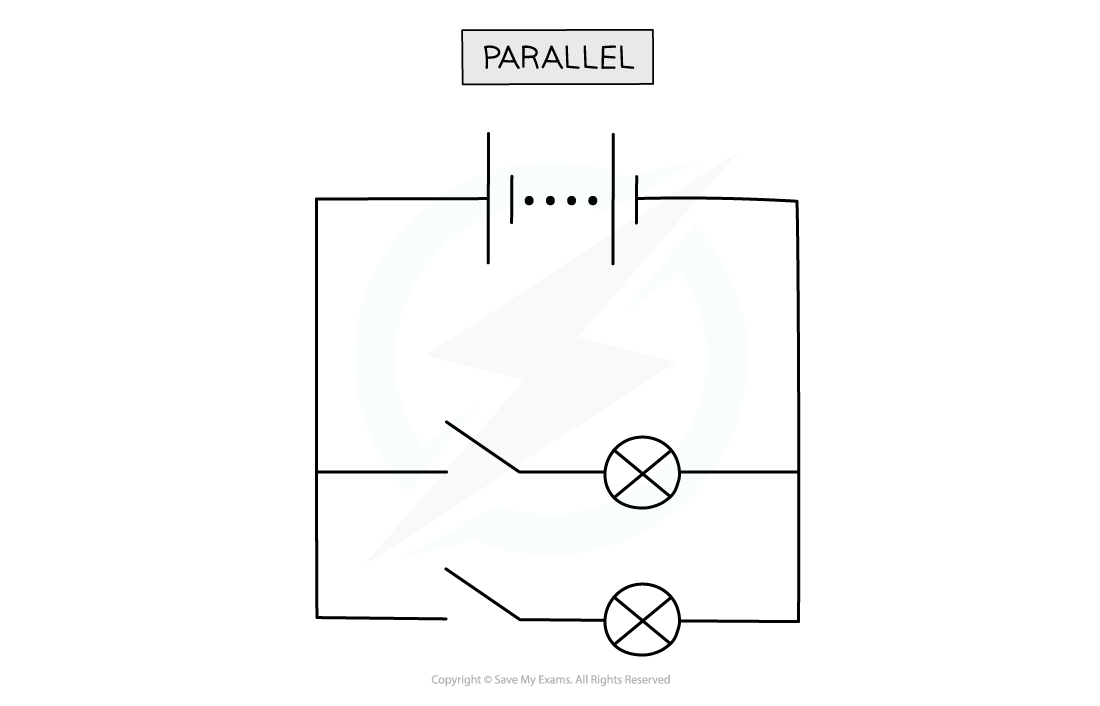Series & Parallel Circuits (SQA National 5 Physics): Revision Note
Exam code: X857 75
Current in series & parallel circuits
What is a series circuit?
A series circuit contains a single complete loop

What is a parallel circuit?
A parallel circuit consists of multiple loops containing circuit components

Current in a series circuit
In a series circuit, the current is the same value at any point
This is because the number of electrons per second that passes through one part of the circuit is the same number that passes through any other part
This means that all components in a closed-loop have the same current

Current in parallel circuits
The current before a junction is equal to the sum of currents along each branch after the junction

Current from the power supply (4 A) is split along each branch (2 A). These currents combine again on the other side
At a junction in a parallel circuit (where two or more wires meet), the current is conserved
This means the amount of current flowing into the junction is equal to the amount of current flowing out of it
Note that the current does not always split equally – often there will be more current in some branches than in others
The current in each branch will only be identical if the resistance of the components along each branch is identical

Current is split at a junction into individual branches
Worked Example
In the circuit below, ammeter A0 shows a reading of 10 A, and ammeter A1 shows a reading of 6 A.

What is the reading on ammeter A2?
Answer:
Step 1: Recall that at a junction, the current is conserved
This means that the total amount of current flowing into a junction is equal to the total amount flowing out
Step 2: Consider the first junction in the circuit where current splits
The diagram below shows the first junction in the circuit

Step 3: Calculate the missing amount of current
Since 10 A flows in to the junction (the total current from the battery), 10 A must flow out of the junction
The question says that 6 A flows through ammeter A1 so the remaining current flowing through ammeter A2 must be:
10 A − 6 A = 4 A
Therefore, 4 A flows through ammeter A2
Examiner Tips and Tricks
The direction of current flow is important when considering junctions in a circuit. You should remember that current flows from the positive terminal to the negative terminal of a cell / battery. This will help determine the direction of current flow in a circuit.
Did this video help you?
Potential difference in series & parallel circuits
Potential difference in series circuits
In a series circuit, the sum of potential differences across the components is equal to the potential difference of the supply

In a series circuit, the components share the potential difference of the supply
Worked Example
In the circuit diagram below, the potential difference of the supply is 16 V. There is a potential difference of 10 V across component X.
Calculate the potential difference across component Y.

Answer:
Step 1: Recall the rule for potential difference in series
The sum of potential differences across components in series is equal to the potential difference of the supply
Step 2: Write an equation to determine the potential difference across Y
VS = VX + VY
Where:
VS is the potential difference of the supply = 16 V
VX is the potential difference across X = 10 V
VY is the potential difference across Y
Recall that:
VS = 16 V
VX = 10 V
Step 3: Substitute in the known quantities and calculate VY
16 = 10 + VY
Therefore, the potential difference across Y is 6 V
Potential difference in a parallel circuit
The potential difference across each branch of a parallel circuit is the same as the potential difference of the supply

The potential difference of the supply is 12 V, and there is a potential difference of 12 V across each branch
It is important to notice that the potential difference in a parallel circuit is equal across each branch
In the example above, if one branch in the circuit contained multiple components, the 12 V would be split between the components on that branch

Unlock more, it's free!
Did this page help you?